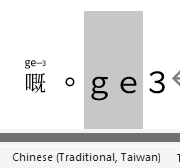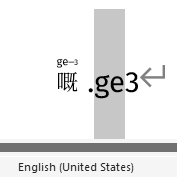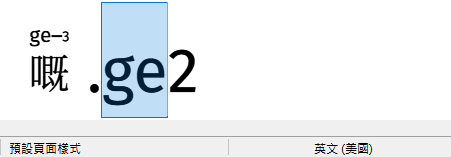I passed on ultra-early-access of Pokfield to five testers, who are existing users, or on the Words.hk team. In one week, I’ll open up access to more testers.
Packaging a new release take time and manual attention (about 3 days); I’ll be doing two more releases (end-of-March, end-of-April), before the font’s general public availability on May 15.
The current version is feature-complete, but could be better. Please do not re-distribute.
About 2.3
Notes about this version can be found in this thread: Cantonese Font v2 - Development Roadmap & Status - #12 by jkwchui
In the next week (before admitting more general testers), I’ll be writing up / filming a short tutorial about the font and its features.
Testing focus for 2.3 series
Platform / app compatibility
In crafting Pokfield, I take “what should be possible with fonts” from the specifications, and push it to the utmost. Font rendering is very complicated, and most renderers do not seem to respect all the built-in redundancies.
The following test string uses many of the Pokfield features:
我喺{Shek Kip Mei}[個 x 1]|英\文.man4老師|叫|[陳大文 n]|。
{idiom: 1}
jyut{tone 6}
昨夜見軍帖,可汗大點兵
By copying the text into the application you are using, and applying an Italics style to 昨夜見軍帖,__大點兵, you should see the following:
Mac/Keynote
You should specify the operating system / application, and I strongly suggest posting a screenshot similar to the above along with your comment. It is very valuable if you can help discover the usability of all four variants (which is generally easily done by changing the font several times).
[TODO] May need a template for compatibility testing
Pronunciation errors
The core offering from the font is accurate Jyutping, so I am always interested in making it better.
At the moment, pronunciation errors generally come from one of two classes of “mistakes”:
- the font does not have a particular context (e.g., in 2.3.0 it doesn’t yet have xx會, so 路得會 would have an incorrect
wui6) - “segmentation errors”: what is considered a unit of word is messed up. E.g., 天上落雪 may incorrectly have a
soeng5, because the font is interpreting the phrase as 天|上落|雪.
You can help narrow down by providing the correct segments manually. (More in the article for broader testers that is incoming in the next week.)
Feature requests
Once you start using the font, you may find that there are convenience features you’d like the font to do for you. You are welcome to post them here too; they may fit into the font, or some supporting web-app.




















